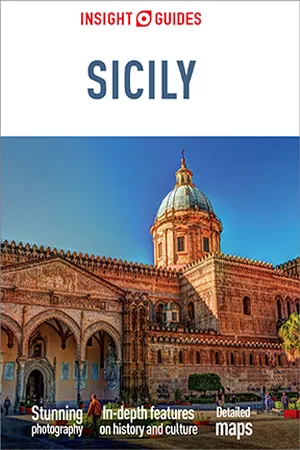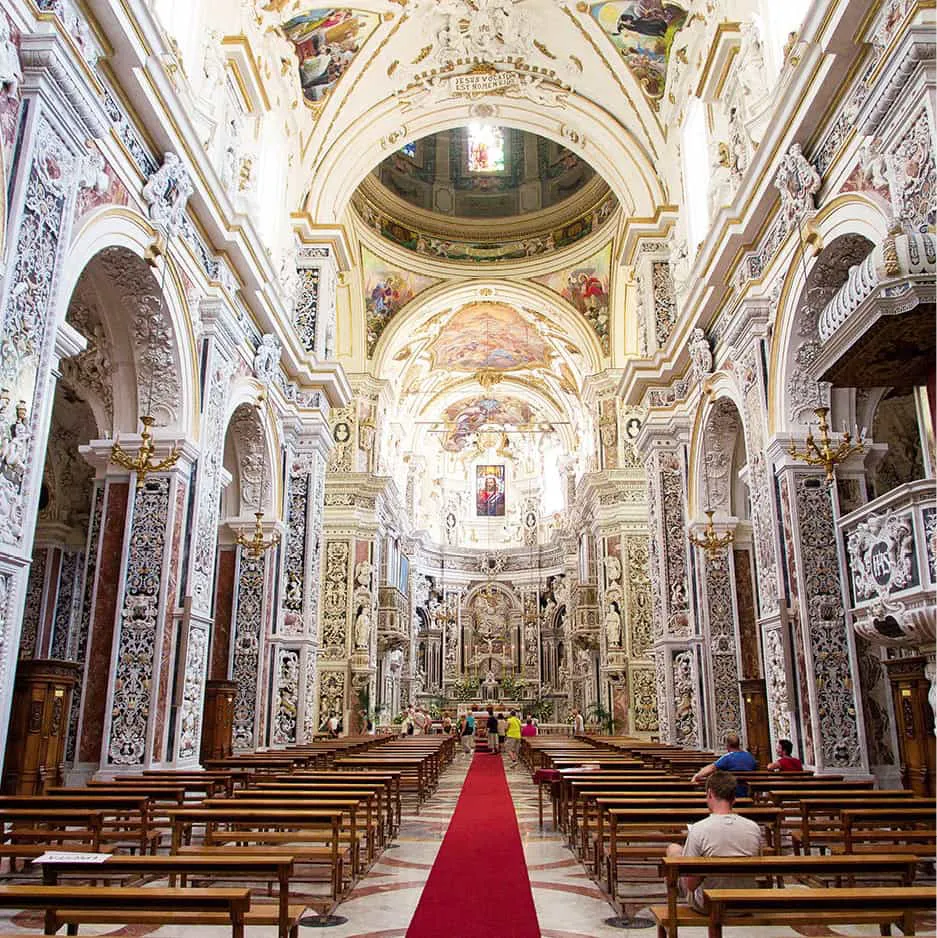
Insight Guides Sicily (Travel Guide eBook)
- English
- ePUB (mobile friendly)
- Available on iOS & Android
Insight Guides Sicily (Travel Guide eBook)
About this book
Insight Guides: all you need to inspire every step of your journey.
From deciding when to go, to choosing what to see when you arrive, this is all you need to plan your trip and experience the best of Sicily, with in-depth insider information on must-see, top attractions like buzzing Palermo, Mount Etna and Agrigento's Valley of the Temples.
- Insight Guide Sicily is ideal for travellers seeking immersive cultural experiences, from exploring Palermo's Arab-Norman heart, to discovering the exquisite and hiking-friendly Zíngaro nature reserve
- In-depth on history and culture: enjoy special features on festivals, architecture and Sicily in the movies, all written by local experts
- Invaluable maps, travel tips and practical information ensure effortless planning, and encourage venturing off the beaten track
- Inspirational colour photography throughout - Insight Guides is a pioneer of full-colour guide books
- Inventive design makes for an engaging, easy reading experience
About Insight Guides: Insight Guides is a pioneer of full-colour guide books, with almost 50 years' experience of publishing high-quality, visual travel guides with user-friendly, modern design. We produce around 400 full-colour print guide books and maps, as well as phrase books, picture-packed eBooks and apps to meet different travellers' needs. Insight Guides' unique combination of beautiful travel photography and focus on history and culture create a unique visual reference and planning tool to inspire your next adventure.
Frequently asked questions
- Essential is ideal for learners and professionals who enjoy exploring a wide range of subjects. Access the Essential Library with 800,000+ trusted titles and best-sellers across business, personal growth, and the humanities. Includes unlimited reading time and Standard Read Aloud voice.
- Complete: Perfect for advanced learners and researchers needing full, unrestricted access. Unlock 1.4M+ books across hundreds of subjects, including academic and specialized titles. The Complete Plan also includes advanced features like Premium Read Aloud and Research Assistant.
Please note we cannot support devices running on iOS 13 and Android 7 or earlier. Learn more about using the app.
Information



Table of contents
- Sicily’s Top 10 Attractions
- Editor’s Choice
- Introduction: A Volcanic Heritage
- The Sicilians
- The Shaping of Sicily
- Decisive Dates
- Insight: Building for Posterity
- The Mafia
- Food and Wine
- Wild Places
- Introduction: Places
- Palermo
- Insight: A Flowering of Flamboyance
- Palermo Province
- Insight: The Arab-Norman Legacy
- Trápani Province
- The Egadi Islands and Pantelleria
- Agrigento and the Valley of the Temples
- Agrigento Province
- Insight: Festivals Sacred and Profane
- Caltanissetta Province
- Enna Province
- Ragusa Province
- Siracusa
- Siracusa Province
- Insight: The Art of Puppetry and Painted Carts
- Catania
- Mount Etna and Catania Province
- Taormina
- Messina Province
- The Aeolian Islands
- Travel Tips: Transport
- Travel Tips: A–Z
- Travel Tips: Language
- Travel Tips: Further Reading